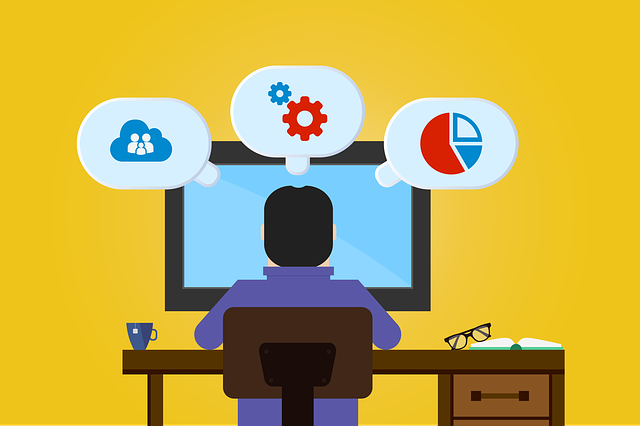There are majorly three reasons why one works on a software development project i.e. to serve the needs of a client, to solve a real-world problem and for personal use. All three reasons will require a different approach to software development. Your developers’ team works hard and puts in a lot of effort to develop and update software, apps, or tools. You must plan out an ideal software development process that suits your team and maximizes the productivity of all your developers. Your approach towards working will have a great impact on the time, efforts and money that your team consumes throughout the process.
Expert Slava Vaniukov, CEO at Softermii, claims that: the software product development process is a series of stages that a development company or an outsourcing team undertakes to turn a product idea into reality, passing through all the important stages of developing software product.
If your work requires flexibility, but your processes are rigid, you must change it. In this blog, we have mentioned 4 of the most popular software development processes, who should and who should not use it. Keep your eyes open for the most beneficial software development process for your team.

Here Is The List Of The Popular Software Development Processes:
- Waterfall
- Agile and Scrum
- V-Shaped
- Spiral software development process
Waterfall
The Waterfall software development process (AKA Classic Lifecycle model) is one of the oldest and most basic software development models of all time. You follow a sequence and complete each phase before moving on to another one. Here you need to plan out your whole process beforehand and complete each phase before jumping onto the next one. That’s where the name waterfall comes from.
These Are The Phases Of Waterfall Software Development Process:
- Planning
- Requirements
- System and software design
- Implementation
- Testing
- Deployment
- Maintenance/Updates
Who Should Use It
The structure of the Waterfall software development process is pretty rigid and stringent. It is best suited for large organizations where a lot of documentation is required before the project starts.
Who Should Not Use It
It is not for someone who is developing a new product or a project that requires constant feedback during their process.
Agile And Scrum
An agile development process is a dynamic approach to software development. It is an umbrella term for project management that relies on feedback-driven changes when developing software. Scrum falls under the Agile development process.
Unlike the waterfall process, Agile is where teams work in sprints to build software for customers and takes feedback. These sprints vary from team to team but usually, it is anywhere from 2 weeks to 2 months.
This process enables the developers to release often and respond to the needs of the users. It is flexible in nature so you need not have a full list of documentation or a rigid flow to follow. You can change the flow in the middle if required.
Example – If you have developed a messaging app and you want to add a ‘location sharing’, ‘live location sharing’ and ‘emergency button’ features in the app. You go for an Agile Sprint and create these features with basic utility. Once you release this feature, you will start getting feedback and you can implement change accordingly. This helps you cater to users’ needs in real-time. Scrum is one of the most popular frameworks that falls under Agile. Here are the phases of Scrum:
- Product Backlog
- Sprint Planning and Sprint Backlog
- Sprint (Design & Develop)
- Testing and Product Demonstration
- Feedback, retrospective, and next sprint planning
Who Should Use It
It is suited best for teams who need to continuously work on updates of a product. The process is so flexible that it is favored by most startups and tech-based companies. It simplifies the process of rolling out new features and makes it fast. This process is beneficial when you are working on custom software development for a client.
Since small releases are easier to develop and change, the pressure on the developers decreases massively. Also, the developers can understand their mishaps through instant feedback that they get.

Who Should Use It
If your software development team has a strict budget or timeline, then you might want to avoid using it. When a team uses the scrum framework, there are chances that the tasks might take longer due to the sprints. This would also cost you more time, energy and money. Also, when you are using Agile and Scrum, you need to have a strong scrum master who understands and looks after the process.
V-Shaped
V-shaped model is a type of Software development process where processes are executed sequentially in a V-shape. Here, the strict “testing” process is associated with each corresponding development stage. A test is designed for each stage parallelly while planning the process. You design an Acceptance test while planning the requirements, a system test is designed while deciding the system of the software, and so on. Once the software is at the development stage, you run these tests sequentially.
Phases:
- Requirements analysis
- System Design
- Architecture Design
- Module Design
- Development
- Unit testing
- Integration testing
- System testing
- Acceptance testing
Who Should Use It
If your software development team works on small projects with clear and static requirements, then it is for you. The V-shaped software development process helps you test your software along the way. This enables you to deliver a completely bug-free software.
Who Should Not Use It
If you are developing anything beyond a small project, this process might not be for you. Understanding and planning all the requirements and tests from the beginning of the project is difficult for anyone. There are chances that the final result of this process might differ from what your need is at the time.
Spiral Software Development Process
The spiral software development process is a mix of the V-shaped process’ testing and Agile’s incremental nature.
Once you have decided upon the plan for a milestone, you need to do a risk assessment of the plan to identify areas of excessive risk. The risk assessment part is what makes the spiral process different from the others. The solution that you have created needs to be analyzed in the second stage. When the spiral reaches the end of the second quadrant, a project prototype is created with the best possible solution. It is delivered to the users for validation and the results of the same are evaluated. The scope of the spiral increases with each loop.

Who Should Use It:
If your team wants to stay completely risk-averse and you are working on a large project, then you should think of using the spiral process. Documentation and validation are done along the way of development.
Who Should Not Use It:
The spiral software development process is rarely used practically. It is actually a theoretical approach for helping developers think critically about their iterative approach to development. People using it professionally often complain that it gets too rigid after a point of time.
Conclusion
You would not know the perfect process for your development team until you give it a try. The process you need while refactoring your code would differ from the one you need while creating a new tool. You can use a mix and take the best parts of all the processes to create your own new software development process. If there are any other processes you’d like to know more about, let us know in the comments down below.
